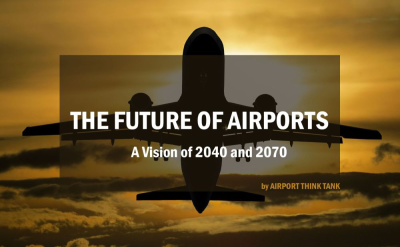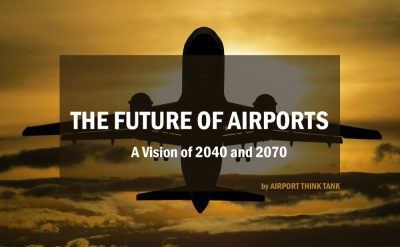
The Future of Airports: The World in 2040 and 2070 (Topic No. 1)
The Airport Think Tank of ENAC Alumni published on April 27, 2020 the global analysis of The Future of Airports. Each week, discover a new focus on one of the 11 topics of this research initiative.
There will be around 9 billion human beings in 2040, and then 10.5 billion in 2070. Most of this growth will occur in Asia and Africa. In the meantime, living conditions in the emerging and underdeveloped regions will improve. This might lead to a dramatic increase in the air travel demand that will call for new airports and more regional integration. After Europe, Africa (SAATM) and southeast Asia (ASEAN-SAM) are on their way to becoming the next single aviation markets.
About 68% of the worldwide population will live in urban areas in 2050. The growth of megalopolis will create challenges in mobility but also give birth to new aviation megacities. The large footprint of megacities and the congestion on the ground might promote multi-airport systems and secondary airports. Smaller and rural communities could revive or grow with people looking for another way of life. Local airports will continue to play a vital role in connecting them to the world.
Wages are increasing in developing countries. Carbon taxes on transportation are in discussion. Producing on the other side of the world is not as profitable as it was. Workers of western nations ask for relocating production and jobs. A growing number of consumers buy locally and call for a circular economy. The relocalization of the production of goods and its decentralization to more local sites fostered with a revolution in tooling and industrial processes (e.g. 3D printing) can deeply impact air cargo.
Life expectancy is improving worldwide. The population will continue to include a growing number of elders, healthier and wealthier than their forefathers. Children born after 2000 are growing up with information technologies. Hyperconnected, the communities of 2040 and furthermore 2070 will not have the same notion of time and space. Future airports will have to address and reconcile these different needs.
The correlation between human activities and global warming has been widely documented. Current policies and effective actions around the world are mostly behind the goals set in 2015 under the Paris Agreement. Facing the most challenging threat of human history, the aviation industry will continue its unprecedented effort to lower its environmental footprint. While the best warming is the one that we do not generate, airports will have to adapt to emit less, but also to be more resilient against climate change.
















No comment
Log in to post comment. Log in.